14 Nights / 15 Days
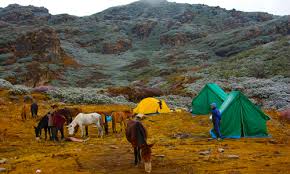
Route -
Paro - Thimphu - Punakha - Tashithang - Punakha - Wangdue Phodrang - Phobjikha - Trongsa - Bumthang - Mongar - Trashigang - Trashi Yangtse - Trashigang - Mongar - Trongsa - Zhemgang - Tingtibi - Trongsa - Thimphu - Paro
Route Info -
Total Route Distance: 1685 kilometers
Total Travel Time: 63 hours approximately
Trip Highlights -
Five Chortens - Paro
Nyamai Zam - Paro
Rinpung Dzong - Paro
National Museum of Bhutan - Paro
Drukgyel Dzong Restoration Site - Paro
Choedu Goemba - Paro
Kichu Lhakhang - Paro
Tachog Lhakhang - Paro
Buddha Dordenma - Thimphu
National Memorial Chorten - Thimphu
Simtokha Dzong - Thimphu
Dochu La Pass - Thimphu
Druk Wangyel Chorten - Dochu La
Druk Wangyel Lhakhang - Dochu La
Royal Botanical Garden - Lamperi
Chimi Lhakhang - Punakha
Punakha Dzong - Punakha
Suspension Bridge - Punakha
Jigme Dorji National Park - Punakha to Gasa
Tashithang - Punakha to Gasa
Gasa Hotspring
Radak Neykhang - Wangdue Phodrang
Wangdue Phodrang Dzong Restoration Site
Lawa La Pass - Before Phobjikha Valley
Gangtey Goemba - Phobjikha Valley
Black-Necked Crane Information Center - Phobjikha
Pele La Pass - Wangdue Phodrang
Chendebji Chorten - Trongsa
Trongsa Dzong - Trongsa
Ta Dzong Museum - Trongsa
Yutong La Pass - Trongsa
Chumey Valley - Bumthang
Jakar Dzong - Bumthang
Jambay Lhakhang - Bumthang
Chakar Lhakhang - Bumthang
Kurjey Lhakhang - Bumthang
Tamshing Lhakhang - Bumthang
Kenchosum Lhakhang - Bumthang
The Burning Lake - Tang, Bumthang
Shertang La Pass - Ura
Ura Valley - Ura, Bumthang
Shingkhar Village - Shingkhar, Bumthang
Dechen Chholing Goemba - Shingkhar
Thrumshing La Pass - Ura to Limithang
Sengor - Paradise of Birds
Yongkala Pass
Limithang
Thrumshing La National Park
Monggar Dzong - Mongar
Yakang Lhakhang - Mongar
Koti La Pass - Mongar to Trashigang
Trashigang Dzong
Sherabtse College - Rangjung
Bartsam Chadhor Lhakhang - Trashigang
Rangshikhar Lhakhang - Trashigang
Black Mountain National Park
Royal Manas National Park
Golden Langur
Zhemgang
Tingtibi
Arts & Craft Market - Thimphu
Tiger's Nest Temple - Paro
Chele La Pass - Paro-Haa
Mount Jomolhari - Chele La Pass
Mount Jichu Drake - Chele La Pass
Best Time of the Year -
Best time of birding in Bhutan is during Spring (from March to May) but you can also find plenty during other seasons including rare Black-necked cranes only during the winter
After your arrival at Paro International Airport and completion of all entry formalities, we will escort you to the car. We drive you to Paro (2250 m/7382 ft) town for lunch and refreshments. We will keep it a light day with introduction to rich Bhutanese culture and traditions.
We visit the Five Chortens located beside the Ugyen Pelri Palace are five square chortens built in memory of the first king of Bhutan, Sir Ugyen Wangchuck. On foot we expedite over a traditional wooden bridge below Paro Dzong commonly known as Nyamai Zam which was washed away in a flood in 1969. You can capture the most stunning picturesque of Paro Rinpung Dzong from the west bank of the Pa Chhu near the bridge.
The Paro Dzong or Rinpung Dzong construction began in 1644 after Zhabdrung Ngawang Namgyel commanded but it was severely burnt down by fire in 1906 despite surviving the 1897 massive earthquake. You can find administrative centers, courts and monk body headquarters of the Paro district in the dzong. We hike up to Paro Ta Dzong or the National Museum of Bhutan to visit the galleries of Bhutan's transition from the Stone Age to a modern Mahayanist Buddhist and multicultural Kingdom with intact cultural heritage since 4000 B.C.E.
Without further ado, we drive towards Thimphu stopping at Tachog Lhakhang located across the Pa Chhu connected by an ancient iron bridge built in the late 13th and early 14th century by Thangtong Gyalpo, a great Buddhist adept, a yogi, physician, chod master, architect, blacksmith and a pioneering civil engineer. A picturesque landscape will awe you and your camera.
After driving for about an hour to Thimphu, we check into a hotel and unpack to relax. Later in the evening we go birding around sewage pond in the valley. You can try to hunt to capture on camera various species including Ibisbill, Brown Dipper, Black-tailed Crake, White-capped Water Redstart, Plumbous Water Redstart, River Lapwing, Hodgson's Redstart, Russet, Olive-backed Pipit, Rufous-breasted Accentor, Common Sandpiper, White Wagtail and Eurasian Tree Sparrow to name a few.
We visit the famous National Memorial Chorten into the heart of the city built by Ashi Phuntsho Choden Wangchuck as a monument to the Third Druk Gyalpo Jigme Dorji Wangchuck and to world peace. It is an extraordinary piece of Buddhist architecture and artwork with intricate sculptures and stunning paintings. Flock of pigeons at the chorten will present you with plenty of opportunities to capture on camera.
Buddha Dordenma located at a hilltop of Kuenselphodrang overlooking the Thimphu (2350 m/7710 ft) Valley is where we will head next. It is a massive statue of Buddha shakyamuni standing at about 51.5 meters high making it one of the largest Buddha statues in the world. You can see that it is made of bronze but glided in gold with about 125,000 smaller Buddha statues inside the temple.
We drive to Simtokha Dzong next where you can also try to spot some birds in the nearby forest atop a hill. Simtokha means "atop a Demon" built in 1629 by Zhabdrung Ngawang Namgyel making it the first Dzong in Bhutan. It is located at the most strategic location of Thimphu valley and lies about 6 kilometers away from the town center where three roads from Punakha, Paro and Thimphu intersect.
We head towards Dochu La Pass and its Druk Wangyal Chorten and Lhakhang. Its majestic landscape will offer you a 360 degree panoramic view of beautiful far distant snow-peaked Himalayas especially on a clear sunny day. It was built by first Queen Mother Ashi Dorji Wangmo Wangchuck in memory of lost souls of soldiers in 2003 war in the southern foothills against Indian insurgents and as a victory monument to fourth King, Jigme Singye Wangchuck.
Among the mixed forests of hemlock, oak, fir and rhododendron, you can try to spot many species of birds such as Rufous-Gorgeted Flycatcher, Stripe-Throated Yuhinas, Rufous-Vented Yuhinas, Fire-Tailed Myzornis, White-Browed Fulvetta, Spotted Laughingthrush and Chestnut-crowned Laughingthrush.
After lunch at a restaurant near the pass, we descend down to Royal Botanical Garden at Lamperi. It is a home to about 46 species of Rhododendrons, 115 species of ferns, 46 species of avifauna and a popular birding destination. You can try to identify Yellow-billed Blue Magpie, Brown Parrotbill, Eurasian Jay, Yellow-billed Blue Magpie, Streak-breasted Scimitar Babbler, Darjeeling Woodpecker, Rufous-Bellied Woodpecker, Blue-fronted Hodgson’s Redstart, Hodgson’s Redstart, Striated Laughingthrush and White-throated Laughingthrush.
As we drive into the Punakha Valley, we make a short trip to Chimi Lhakhang, the fertility temple located at a hillock near the village of Sosokha. All along the drive we will look for the species like Ultramarine Flycatcher. Great Barbet, Golden-throated Barbet, Long-tailed Shrike, Spotted Dove, Red-vented Bulbul, Common Kestrel, Long-tailed Minivet and Chestnut-tailed Starling. We spend the night at a hotel overlooking the beautiful Punakha valley.
We start our day at Punakha by visiting Punakha Dzong located at the junction of two rivers of Punakha, Pho Chhu (male) and Mo Chhu (female). It served as the capital of Bhutan from 1637 to 1907, holding the first National Assembly in 1953. It is often said to be arguably the most beautiful dzong in the country along with containing the preserved remains of Zhabdrung Ngawang Namgyal and a sacred relic, Ranjung Karsapani.
We then head towards the suspension bridge upstream of Pho Chhu. It is the longest bridge of its kind in Bhutan and offers a stunning view of the valley, dzong, Pho Chhu and villages. We will be birding along the Pho Chu valley looking for one of the main endangered species, White-bellied Heron with a population of less than 60 worldwide. We also might see River Lapwing, Great Cormorant, Common Kingfisher, Crested Kingfisher, Ibisbill and few species of ducks.
After Pho Chhu, we will head along the Mo Chhu river and enter Jigme Dorji National Park. Here we have the possibilities of seeing Black-chinned Yuhinas, Whiskered Yuhinas, Wallcreeper, Spotted Elachura, Slaty-bellied Tesia, Small Niltava, Large Niltava, Little Forktail, Spotted Forktail, Slaty-backed Forktail, Pygmy Wren-babbler and Red–headed Trogon.
As we make our way deeper into the Park, we increases our chances of finding other species of birds such as Ashy Drongo, Brown Dipper, Blue Whistling Thrush, Black Mountain Bulbul, Red-vented Mountain Bulbul, Crested Kingfisher, Crested Bunting, Oriental Turtle Dove, Great Cormorant, Plumbeous Water Redstart, Rufous Sibia, Grey-headed Canary Flycatcher, Green-backed Tit, Black-throated Tit, White-throated Tit, White-capped Water Redstart, Rufous-chinned, Striated Laughingthrush, Bhutan Laughingthrush, Golden-throated Barbet, Great Barbet, Grey Treepie, Verditer Flycatcher, River Lapwing, Grey Wagtail, Gadwall, Large-billed Crow, Treecreeper and if lucky Pallas’s Fish Eagle.
If you prefer dipping into Gasa Hotspring we can drive there before supper. We camp overnight at the Tashithang village.
Driving back to warmer Punakha valley, we start our journey east towards Phobjikha valley via Wangdue Phodrang. From here, the journey continues eastwards through Black Mountain range. It is relatively a short drive with regular stops for birding and photography along with visiting some key cultural and heritage sites such as Radak Neykhang and Wangdue Phodrang dzong restoration site.
All along the way we will look for Bhutan Laughingthrush, Blyth’s Shrike Babbler, Blyth’s Leaf Warbler, Black-faced Warblers, Cutia, Grey-bellied Tesia, Green-tailed Sunbird, Mrs. Gould’s Sunbird, Striated Prinia, Chestnut-bellied Rock Thrush, Pale-Blue Flycatcher, Verditer Flycatcher, Ultramarine Flycatcher, White-capped River Chat, White-tailed Nuthatch, Rusty-flanked Treecreeper, Yellow-browed Tits, Strong-footed Bush Warbler and few species of Cuckoos,
We can also try to spot some local scarce species like Ward’s Trogon and Yellow-rumped Honeyguide. In additions to the above species, various readily available species in this region are: Amur Falcon, Redmantled Rosefinch, Firebreasted Flowerpecker , Redheaded Bullfinch, Scarlet Finch, Whitetailed Nuthatch, Magpie-Robin, Goldcrest, Great Pied Hornbill, Common Hill Partridge, Snow Pigeon, Rufous-breasted Accenter and White-backed Munia.
As we enter Phobjikha valley upon crossing Lawa La Pass, the vegetation changes into dwarf bamboo where you can try to spot for Spotted Laughingthrush, Chestnut-crowned laughingthrush, Black-faced Laughingthrush, Spotted Nutcracker, Great Parrotbill, Brown Parrotbill, Oriental Skylark, White-browed Shortwing, Yellow-billed Blue Magpie, Chestnut-headed Tesia, Red-billed Chough, Large-billed Warbler, Whistler’s Warbler, Slender-billed Scimitar Babbler and Grey-sided Bush Warbler.
The road leads through a forest of oak and rhododendron and then broad Phobjikha valley which is one of the few glacial valleys in Bhutan. Because of large flock of black-necked cranes that winter here, this valley is one of the most important wildlife reserve in the country.
Gangtey Goemba (2900 m or 9514 ft) of Phobjikha is our first stop located on a forested hill overlooking the entire green expanse of the valley. It was built by Pema Thinley, the grandson and reincarnation of Pema Lingpa in 1613 and the larger Goemba was built by the second reincarnation, Tenzing Legpey Dhendup.
By stopping at the Black-Necked Crane Information Center of Royal Society for Protection of Nature (RSPN), you can get a better insight into the valley's treasure. From spotting the cranes (during season) through powerful spotting scopes, checking the information inventory to biking around the feeder road you can choose activity to expedite for the rest of the day. We can also either opt out to experience a Bhutanese Home-stay or regular hotel for the night.
Driving from Gangtey valley for about 40 minutes east, we head to Pele La Pass (3420 m/11220 ft). It offers access to central Bhutan over the Black Mountains, where you can spot Mt. Jomolhari (7326 m/24035 ft), Mt. Jichu Drake (6989 m) and Mt. Kang Bum (6526 m) towards the west marking the border of Black Mountain National Park.
We bird along the road at the pass for high altitude species like Himalayan Griffon, Himalayan Monal, Alpine Accentor, Rufous-breasted Accentor, Spotted Laughingthrush, Scaly Laughingthrush, Golden Bush Robin, White-browed Rosefinch, Dark-rumped Rosefinch, Collared Grosbeak, White-winged Grosbeak, Darjeeling Woodpecker, Rufous-bellied Woodpecker and if lucky Satyr Tragopan, the bird that draw many birders to the Himalayas.
We drive to Trongsa (2200 m/7218 ft) for about 3 hours on a declining elevation spotting various species like Golden-breasted Fulvetta, White-browed Fulvetta, Speckled Wood Pigeon, Black-throated Tits and Rusty-cheeked Scimitar Babbler. You will also see yaks grazing on the barren hills as we manoeuver into the broad heavily cultivated Mangde Chhu Valley.
We stop at Chendebji Chorten, a patterned on Kathmandu's Swaymbhunath Stupa with eyes painted at four cardinal points built in 18th century by Lama Ngesup Tshering Wangchuk. Once at Trongsa we will explore the Trongsa Dzong, built in 1647 and Ta Dzong located strategically above the Trongsa Dzong on the left bank of the Mangde Chhu.
We drive to Bumthang for about 2 to 3 hours covering about 68 kilometers across Yutong La Pass (3425 m/11237 ft). Black-faced Laughingthrush, Spotted Laughingthrush, Red-headed Bullfinch, Yellow-bellied Fantail, White-throated Fantail, Grey-crested Tit, Coal Tit, Rufous-vented Tit, Yellow-browed Tits, Bar-throated Minla, Green-tailed Sunbird, Mrs. Gould’s Sunbird, Chestnut-crowned Babbler, Spotted Nutcracker, Great Parrotbill, Brown Parrotbill and Rufous-breasted Accentor are some species we will try spotting on our journey.
The vegetation changes from temperate forests of Trongsa to coniferous and mixed alpine of Bumthang. Apart from being one of the most beautiful valleys of the kingdom, Bumthang is also the religious heartland of the country. We check into a hotel and retire for the night.
First, we visit Jakar Dzong located at a hilltop overlooking the valley of Bumthang (2800 m/9186 ft), 'Switzerland of Asia'. We then visit Jambay Lhakhang, Chakar Lhakhang and the famous three Kurjey Lhakhangs. Crossing a suspension bridge, we visit the Tamshing Lhakhang located across the river followed by Kenchosum Lhakhang,
All along these routes as we visit famous cultural sites, the ideal birding spots are farmlands in the valleys and the riverside of Chamkhar Chhu. We stop to locate various species of birds including Red-billed Chough, Common Sandpiper, Blyth's Pipit, Little Bunting, Cormorant and Goldcrest.
Continuing past the Bathpalathang domestic airport we can enjoy the retrospective aspect of the valley as we drive into the Jakar town for early morning snacks. With a packed lunch in our inventory, we head towards the famous Burning Lake - Mebar Tsho located along the way to the Tang village over the feeder road. This small fresh water lake is a very sacred pilgrimage site where people offer butter lamps and prayer flags on auspicious days making it spectacular landscape with rich history for tourists to visit.
We then drive for about 2 hours en routing further east towards beautiful Ura valley (3000 m/9843 ft) through beautiful conifer mountains, valleys, farms and pastures. Shertang La Pass at 3600 meters above sea level will offer you with magnificent views of Mt. Gangkar Puensum on clear sunny days, the highest unclimbed mountain in Bhutan. We can also ride further for about 5 kilometers to Shingkhar village at an elevation of 3400 meters where Dechen Chholing Goemba's majestic surrounding is a perfect place for picnic lunch.
We can walk up near the temples located in close proximity with the mountains to have the very close view of the Himalayan Monal, as the birds comes very close to the monk quarter for feeding. Other birds we can try spotting include Black-billed Magpie, Oriental Skylark and Satyr Tragopan that occur occasionally.
We then drive to Sengor going over Thrumshing La Pass located at an elevation of about 3780 meters or 12402 feet. The Pass is the prime habitat for Blood Pheasants and other high altitude species like Spotted Nutcracker, Red-billed Chough, Fire-tailed Myzornis, Fire-tailed Sunbirds, Snow Pigeons, Orange-flanked, Golden Bush Robin, White-browed Bush Robin, Greats Parrotbills, Fulvous Parrotbills, Stripe-throated Yuhinas, Rufous-vented Yuhinas, Grey-crested Tits, Coals Tits, Rufous-vented Tits, Rufous-fronted Tits, White-browed Fulvata, Dark-rumped Rosefinch, White-collared Blackbird, Rusty-flanked Treecreeper Buff-barred, Ashy-throated Warbler, Blyth’s Leaf Warbler, Large-billed leaf Warbler and Plain-backed Thrush.
The road descends to the village of Sengor (3000 m/9843 ft), a tiny settlement of shingle roofs and lush fields. Before the night fall we can try to spot the Himalayan Owl, which comes around your campsite.
Sengor is a home to the mountain's most special bird, Monal Lophophorus Impejanus and many other species drawing birdwatchers to Bhutan from all over the world. We will begin the day birding around for Satyr Tragopan as Sengor is the hotspot for Satyr Tragopan. In a beautiful settlement of Sengor, the pasture lands are good for a variety of thrushes, alongside flocks of Snow Pigeon feeding on the fields or roosting on the cliff faces.
We can also find other birds such as Gold-naped Finch, Hoary-throated Barwing, Bar-winged Babbler, Scaly-breasted Wren Babbler, Bar-throated Minlas, Red-tailed Minlas, Whistler’s Warbler, Grey-hooded Warbler and Slender-billed Scimitar Babbler. We then drive towards Yongkala Pass to search for Blood Pheasant, Fire-tailed Myzornis and Satyr Tragopan.
We enter the wet subtropical forest and one of the finest birding paradises in the Himalayas. We will be birding the lush forested valley searching for Rufuos-necked Hornbill, Great and Golden-throated Barbets, Orange-bellied Leafbird, Bay Woodpecker, Wedge-tailed Green Pigeon, Mountain Hawk Eagle, Maroon Oriole, Scarlet and Grey-Chinned Minivets, White-gorgeted, Little Pied, Ultramarine and Verdieter Flycatchers, Little Forktail, Grey-hooded, Grey-cheeked and Chestnut-crowned Warblers, Ward’s Trogon, Scaly, Bhutan, and Blue-winged Laughingthrushes, Slender-billed Scimitar Babbler, Black-headed Shrike Babbler and many more.
We spend overnight in our camps at Yongkala.
Spending another day on this route is worth the visit as it is the famous birding paradise and is often regarded as one of the best birding sites in all of Asia with highest birding opportunity to access the seemingly endless tracts of pristine broad-leaved and coniferous forest that spans across a vast attitudinal range. Areas from Yongkala and Namling to Limithang all falls under the Thrumshing La National Park.
We will be searching for the local species such as Barred Cuckoo Dove, Rufous-necked Hornbill, Black Eagle, Rufous-throated, Long-billed and Pygmy Wren Babbler, Lesser Yellow-nape, Grey-headed, Crimson-breasted and Bay Woodpecker, Coral-billed, Slender-billed, Streak-breasted and Rusty-cheeked Scimitar Babblers, Speckled and White-browed Piculet, Scarlet Finches, Blue-throated, Great and Golden-throated Barbets, Long-tailed Shrike, Grey Treepie, Grey-chinned and Scarlet Minivets, Ashy, Spangled and Black Drongos, Small, Large and Rufous-bellied Niltavas, Sapphire, Blue-throated, Ultramarine, White-gorgeted and Rufous- gorgeted Flycatcher, Green-backed, Black-throated, Sultan and Black-Spot Yellow Tits, Golden-breasted, Rufous-winged, Yellow-throated and Nepal Fulvettas, Blue-winged, Grey-sided and Rufous-necked Laughingthrushes, Grey-cheeked, Chestnut-crowned, Black-faced and Blyth’s Leaf Warbler, Blyth’s Shrike and Black-headed Shrike Babbler, Himalayan Cutia, White-breasted and Black-throated Parrotbills.
If we are lucky we may also find the most sought species, Beautiful Nuthatch before driving to Mongar. We explore the Mongar town as long as we have energy. We retire at the hotel for the night.
The morning at Mongar (1600 m/5249 ft) we will visit Mongar Dzong, one of the newest Dzong in Bhutan built in 1930 to replace the original Zhongar Dzong from 17th century. We then head towards Trashigang via Kori La Pass (2373 m/7785 ft) through tight contours of steep mountain slopes before ascending sharply to the pass at about 20 kilometers from Mongar town.
We make several stop along the forested road looking for the Black-tailed Crake, Crimson Sunbird, Himalayan Bulbul and Common Green Magpie before stopping at Kori La pass. Here the forest is rich in mosses and lichens where we may be likely to see Crested Bunting, Bhutan, Scaly and Blue-winged Laughingthrushes, Grey-winged Blackbird, Steak-breasted Scimitar Babblers, Hoary-throated Barwing and Long-tailed Minivet.
Once in the town we can visit Trashigang Dzong or 'the Fortress of the Auspicious Hill'. It was built in 1659 to defend the East against Tibetan invasions by Minjur Tenpa the third Druk Desi. It is strategically located on a hilltop overlooking the confluence of Dangme Chhu and Gamri Chhu rivers, being a political stronghold of Eastern Bhutan for over 300 years.
We can also choose to visit the first college of Bhutan, Sherabtse College at Kanglung which is about an hour drive from the town. If there is plenty time and will to explore more, Bartsam Chadhor Lhakhang is located at about an hour and half drive from the town. Rangshikhar Lhakhang, the residence of Rangshikhar Rinpoche is also another destination we can choose to visit at an hour distance from Trashigang.
Today is our journey back to Bumthang covering about 284 kilometers in approximately 9 to 10 hours. If you prefer a shorter drive of about 220 kilometers, we can spend overnight at beautiful village of Ura in about 7 to 8 hours. We suggest driving to Bumthang taking it as a relaxing flashback-drive so we have daylight advantage to head towards our birding destination in the region of Zhemgang and Tingtibi.
We retire at a hotel either at Ura or Bumthang as per your preferences.
Today we will make a detour from the Lateral Road, heading south from Trongsa through Zhemgang to Tingtibi taking us about 6-7 hours to complete. Zhemgang district falls under Black Mountain and Royal Manas National Parks, which connect via biological corridors to Thrumshing La National Park and Assam's Manas National Park to the south. Tingtibi lies on the boundary of these protected areas, the road from Trongsa passing through several forested valleys and a variety of habitats.
The vegetation is rich in avifauna, with species such as Fire-breasted Flowerpecker, Common Green Magpie, White-bellied Erpornis, Slaty-backed Forktail, Rusty-cheeked, White-browed and Streak-breasted Scimitar-babblers, White-browed Shrike-babbler, Blue-winged Minla, Blue-bearded Bee-eater, Crested Bunting, Beautiful Nuthatch and various woodpeckers.
We will also stop for the endemic Golden Langur a rare monkey endemic to Bhutan and only discovered in the 1950s which is fairly frequent here. Habitats vary from mossy forests to stream-side lowland forest. We also search for Rufous-necked and Great Hornbills, Pin-tailed Green Pigeon, Himalayan Cutia, White-browed Shrike-Babbler, Scarlet Minivet, various laughingthrushes, Chestnut-headed and Grey-bellied Tesias, Spotted Wren-Babbler and also another chance to find Beautiful Nuthatch. We camp at Tingtibi elevated at 800 meters or 2625 feet above sea level.
We set out early on the long drive from Tingtibi back through Trongsa and then drive west towards the Phobjikha Valley in about 7 to 8 hours covering about 180 kilometers approximately. You have already spent a night in this vast glacial valley which is the sacred wintering ground of endangered Black-necked Crane. The cranes will have returned to their Tibetan breeding grounds by mid-March.
However along the journey we should be able to spot some of interesting species in particular Black-throated Parrotbill, Yellow-billed Blue Magpie, Golden-breasted Fulvata, Black-faced and Chestnut-crown Laughinghtrushes, Yellow-rumped Honeyguide and sometime we may also come across the big flock of Himalayan Griffon flying overhead. We spend a night in a comfortable hotel overlooking beautiful Black-necked Crane Valley.
With an early breakfast we start our journey through stunning morning view of majestic landscapes on a meandering road. It will take us about 6 hours to get to Thimphu. This should give you enough time to rest back and enjoy the trip.
We enjoy a drive through warmer valleys of Wangdue Phodrang with scenic paddy fields and singing birds along the Punatsang Chhu. Heading further towards the capital city, we will stop at Dochu La Pass to revisit our previous memories during a lunch and take more pictures of its stunning landscape. We then descend downhill into the capital city, Thimphu.
Once you check into the hotel you can unpack, get refreshed and rest before we go out for shopping your tour souvenir. We will take you for a leisure stroll into the buzzing town of Thimphu at Arts & Crafts Market near the Hotel Tashi Taj. It consists of many small traditional bamboo huts aligned below Norzin Lam showcasing various 13 Arts and Crafts unique to Bhutan.
On your last day, after ample amount of time for you to acclimatize to Bhutanese altitudes and atmosphere before we hike up the strenuous Tiger's Nest temple trial. No visit to Bhutan is considered complete without a visit to this most iconic landmark and religious site. It was first built in 1692 by Gyalsey Tenzin Rabgye at a cave where Guru Rinpoche meditated in the 7th century clinging impossibly to a sheer cliff of about 900 meters above the Paro Valley.
After a drive for about an hour and half from Thimphu to the base of the hike route, we start climbing uphill through beautiful pine forests gentle and wide at first. We ascend for about 2 hours to get to the resting stop from where we can witness a spectacular view of the Taktsang monastery. The total hike to and from Taktsang monastery takes about 4 to 6 hours depending upon how well you can hike and for those who are not able to climb, we can hire horses to aid you.
If you prefer to dine at this iconic landscape we can stop on our way back from the monastery for lunch and refreshments at the Taktsang Cafeteria. Or else if you prefer to hike down with lighter stomach, we will continue our journey to the base and head to the hotel.
As we near late afternoon if you have ample amount of energy left, we will drive for an hour to Chele La Pass at 3,988 meters being one of the highest motor-able passes in Bhutan. We drive through thick forested roads of a botanical paradise and once we get on the top it provides stunning panoramic views of sacred mountain Mt. Jomolhari and Mt. Jichu Drake. Wild roses, purple and yellow primulas and blue iris cover the ground along with various species of rhododendrons.
Here at the pass we could find three different species of pheasants such as Himalayan Monal, flocks of Blood Pheasants and Kalij Pheasant. We may also find several rosefinches, grosbeaks and laughingthrushes. Driving back to Paro, we retire for the night at the hotel.
At the breakfast we may review your stay with us. We can help if you need any help packing to your next destination. Your suggestions and comments to improve the services will be taken seriously with a sincere humility. Your departure from Bhutan is just a beginning of our new friendship.
We are a family based company and treating our clientele as one of our own family members is our main goal. By understanding our own travel experiences, we wish to make your visit interesting and meaningful. We want your travel experience to be as friendly, truthful, caring, and helpful as a family member would be with us. With these principles in our minds and hearts, the door of Acholala Effect (your home away from home) is always open to you. We want the memories you create in Bhutan to be ones you always treasure like we treasure our land, family, and culture here. Read More...
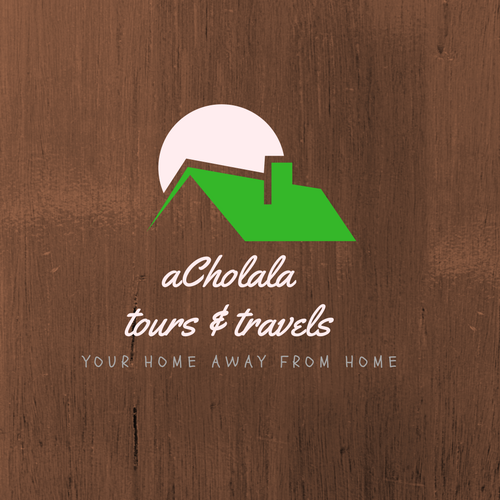
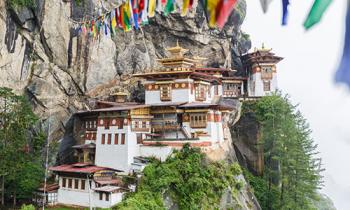 16D/15N
16D/15N
A Challenger's Quest to Rodong La Pass T..
Paro - Thimphu - Punakha - Trongsa - Bumthang
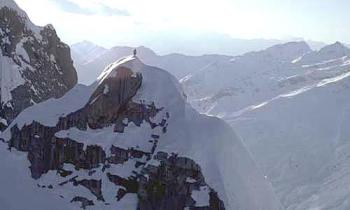 14D/13N
14D/13N
Journey to the Center of the Himalayas 2..
Paro - Thimphu - Punakha - Trongsa - Bumthang
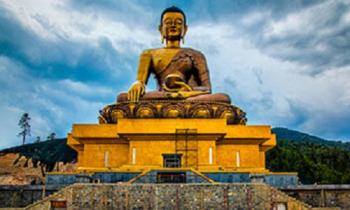 13D/12N
13D/12N
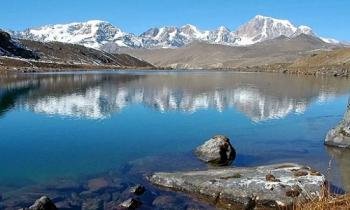 12D/11N
12D/11N
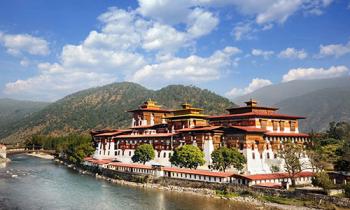 11D/10N
11D/10N
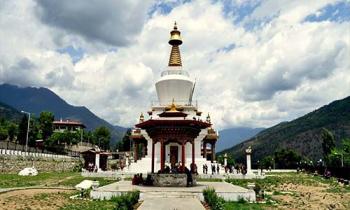 10D/9N
10D/9N
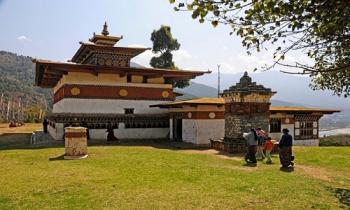 9D/8N
9D/8N
Journey to the Center of the Himalayas T..
Paro - Thimphu - Punakha - Trongsa - Bumthang
 8D/7N
8D/7N
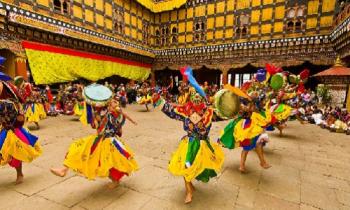 8D/7N
8D/7N
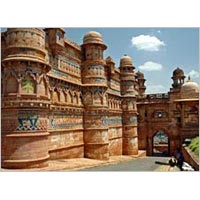 15D/14N
15D/14N
New Delhi - Agra - Gwalior - Bhopal - Indore - Mumbai - Tikamgarh - Chhatarpur - Au..
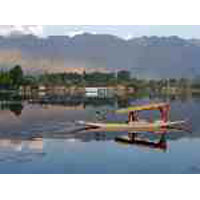 15D/14N
15D/14N
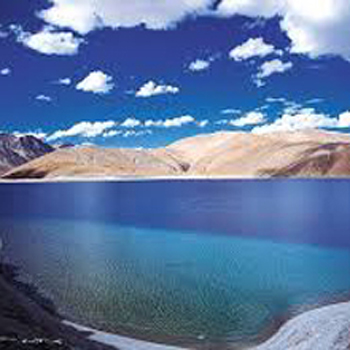 15D/14N
15D/14N
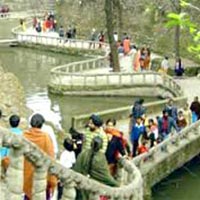 15D/14N
15D/14N
Chandigarh - Shimla - Manali - Dalhousie - Amritsar - Dharamshala
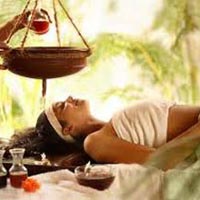 15D/14N
15D/14N
New Delhi - Haridwar - Rishikesh - Shivpuri - Agra - Jaipur
 15D/14N
15D/14N
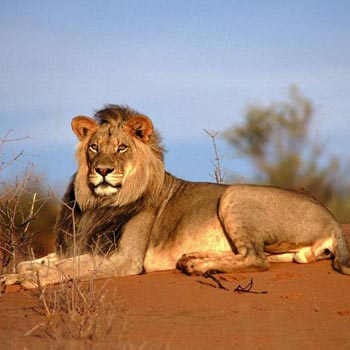 15D/14N
15D/14N
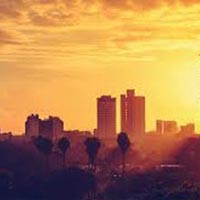 15D/14N
15D/14N
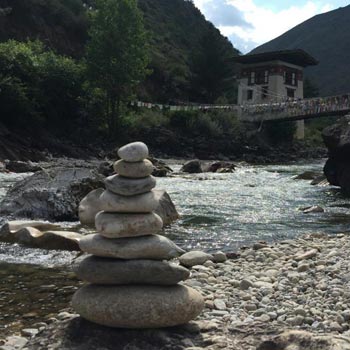 15D/14N
15D/14N
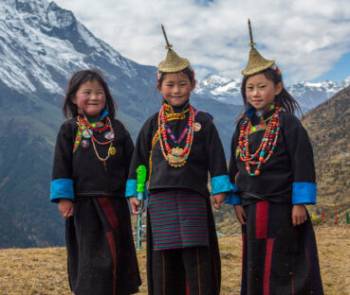 5D/4N
5D/4N
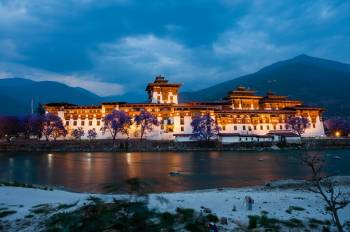 7D/6N
7D/6N
6 Nights/ 7 Days - Bhutan Happiness Tour
Punakha - Bumthang - Paro - Thimphu - Phobjik
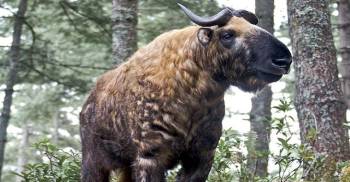 20D/19N
20D/19N
20 Days Land Package Country Tour BHUTAN..
Punakha - Paro - Phuntsholing - Bagdogra - Bumthang - Mongar - Trashigang - Trongsa..
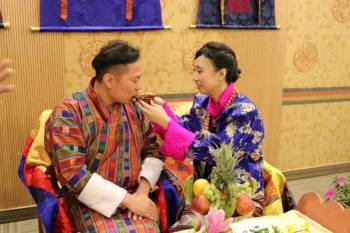 4D/3N
4D/3N
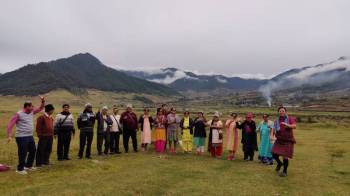 6D/5N
6D/5N
 7D/6N
7D/6N
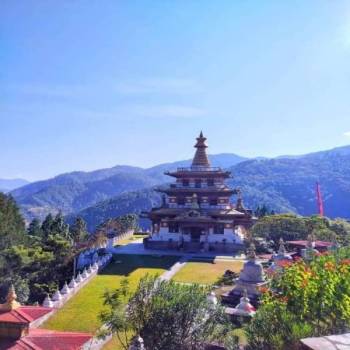 7D/6N
7D/6N
Rimso 7 Days 6 Nights Bountiful Tour fo..
Thimphu - Punakha - Paro - Phuentsholing
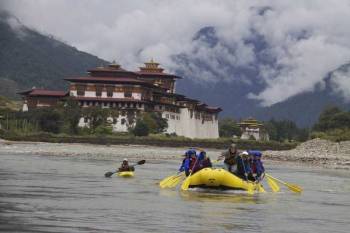 7D/6N
7D/6N
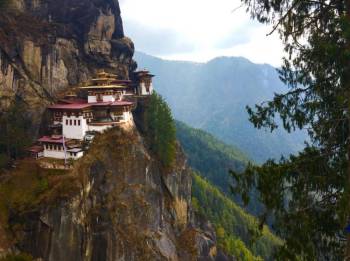 8D/7N
8D/7N
Jalpaiguri - Thimphu - Paro - Punakha - Phuentsholing